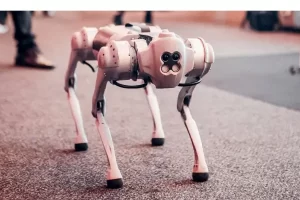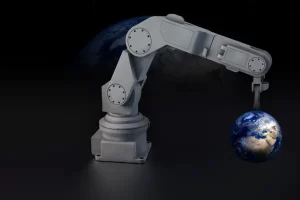In recent years, the field of robotics has experienced a remarkable transformation, marked by significant advancements in technology and artificial intelligence (AI). Among the most intriguing developments is the emergence of humanoid robots—machines designed to resemble and interact with humans in a natural way. At the forefront of this revolution is Tesla’s Optimus, a humanoid robot that promises to redefine our understanding of robotics and its applications in various sectors. This article will explore the world of humanoid robots, delve into the specifics of Tesla’s Optimus, assess its potential impact across industries, and consider the challenges and future of humanoid robotics.
Understanding Humanoid Robots
Definition of Humanoid Robots
Humanoid robots are robots that are designed to replicate human appearance and behavior. This design can include a head, arms, legs, and a torso, allowing them to perform tasks typically associated with humans. Unlike traditional robots, which often have a fixed function and design tailored to specific tasks, humanoid robots are built to adapt to a wide range of environments and tasks.
Key Features
Humanoid robots possess several key features that set them apart:
- Mobility: Many humanoid robots are equipped with advanced locomotion systems that allow them to walk, run, and navigate complex environments.
- Dexterity: These robots often have articulated limbs, enabling them to perform intricate tasks like grasping objects or manipulating tools.
- Sensory Perception: Equipped with sensors and cameras, humanoid robots can perceive their surroundings, recognize faces, and interact with people effectively.
- AI Integration: Advanced artificial intelligence allows humanoid robots to learn from their experiences, understand natural language, and respond to human emotions.
Importance of Human-like Interaction
The primary advantage of humanoid robots lies in their ability to interact with humans in a way that feels natural and intuitive. This capability is particularly important in fields like healthcare, where robots can provide companionship to elderly patients or assist in rehabilitation, as well as in service industries where customer interaction is key.
Tesla’s Optimus: A Game Changer
Introduction to Tesla’s Optimus
Unveiled in 2021, Tesla’s Optimus, also known as Tesla Bot, represents a significant leap in the development of humanoid robots. Designed to handle tasks that are mundane, repetitive, or dangerous for humans, Optimus aims to enhance productivity and safety across various sectors.
Background and Development Timeline
Tesla has a long history of innovation in the automotive industry, but with Optimus, the company is venturing into a new frontier. The project began as a way to apply Tesla’s expertise in AI and robotics beyond vehicles, with Elon Musk expressing the vision of creating robots that could take over menial tasks.
Purpose and Intended Applications
Optimus is designed with several applications in mind, including:
- Manufacturing: Streamlining production lines and assisting human workers.
- Healthcare: Providing support in caregiving, rehabilitation, and companionship.
- Home Assistance: Helping with household chores, shopping, and elderly care.
- Service Industry: Performing tasks in retail, hospitality, and other customer-facing roles.
Unique Technologies and Innovations
Optimus incorporates several cutting-edge technologies that set it apart from other humanoid robots:
- AI Capabilities: Leveraging Tesla’s advancements in AI, Optimus can learn from its environment and improve its performance over time.
- Mobility and Dexterity: Optimus is designed with advanced actuators and sensors that allow for fluid movement and fine motor skills.
- Energy Efficiency: Utilizing Tesla’s expertise in battery technology, Optimus is engineered to operate efficiently, allowing for extended use without frequent recharging.
The Impact of Humanoid Robots on Various Industries
Manufacturing and Automation
One of the most significant applications of humanoid robots is in manufacturing. Optimus has the potential to revolutionize production processes by:
- Enhancing Productivity: By taking over repetitive tasks, humanoid robots can allow human workers to focus on more complex and creative aspects of manufacturing.
- Improving Safety: Robots can handle dangerous materials or operate in hazardous environments, reducing the risk of workplace injuries.
Healthcare and Caregiving
The healthcare industry stands to benefit immensely from the integration of humanoid robots like Optimus. Potential applications include:
- Elderly Care: Robots can provide companionship, remind patients to take medication, and assist with daily activities, helping to improve the quality of life for the elderly.
- Rehabilitation Support: Humanoid robots can assist patients in physical therapy, offering encouragement and assistance in exercises tailored to their recovery needs.
Service Industries
In service industries, humanoid robots could reshape customer interaction. Key areas of impact include:
- Retail: Robots can assist customers in finding products, answering questions, and providing personalized recommendations.
- Hospitality: In hotels and restaurants, humanoid robots can enhance guest experiences by providing information, taking orders, and even performing housekeeping duties.
Challenges Facing Humanoid Robots
Technical Limitations
Despite the promising potential of humanoid robots, several technical challenges remain:
- Mobility: Achieving fluid, human-like movement is a complex engineering challenge. Current humanoid robots often struggle with balance and navigation in unpredictable environments.
- Perception: While humanoid robots can perceive their surroundings, accurately interpreting complex human emotions and social cues remains a significant hurdle.
- AI Limitations: While advancements in AI have been remarkable, developing robots that can genuinely understand context, nuance, and emotional intelligence is an ongoing challenge.
Ethical Considerations
The rise of humanoid robots raises important ethical questions:
- Job Displacement: As robots take over tasks traditionally performed by humans, concerns about job loss and economic impact are prevalent. Industries may need to adapt to a workforce that includes both humans and robots.
- Human-Robot Interaction: Establishing trust between humans and robots is essential. Questions arise about the emotional implications of human-like robots, especially in caregiving roles.
The Future of Humanoid Robots
Predictions for the Next Decade
The next decade is likely to see significant advancements in humanoid robotics. Predictions include:
- Increased Adoption Across Industries: As technology improves, more industries will begin to integrate humanoid robots into their operations.
- Enhanced AI Capabilities: Continued advancements in AI will enable robots to better understand and interact with humans, improving their effectiveness in various roles.
Potential Societal Impacts
The widespread adoption of humanoid robots could lead to several societal changes:
- Shifts in Labor Markets: With robots taking over certain jobs, there may be a need for retraining programs to help displaced workers transition into new roles.
- Changes in Human Interaction: As robots become more prevalent in daily life, societal norms around interaction with machines may evolve, influencing everything from companionship to service expectations.
Innovations to Watch
Key innovations that could shape the future of humanoid robots include:
- AI and Machine Learning: Continued advancements in these fields will allow robots to learn from experiences and improve their capabilities over time.
- Battery Technology: Innovations in energy storage will enhance the efficiency and operational time of humanoid robots, making them more practical for everyday use.
Conclusion
The emergence of humanoid robots like Tesla’s Optimus marks a pivotal moment in the evolution of robotics. As we continue to explore the possibilities and challenges that come with these technologies, it is crucial to strike a balance between innovation and ethical responsibility. The potential for humanoid robots to enhance productivity, improve quality of life, and redefine industries is immense. However, society must also be mindful of the implications of such advancements, ensuring that technology serves as a tool for human benefit rather than a source of disruption.
Call to Action
As we stand on the brink of a new era in robotics, we invite you to share your thoughts on the future of humanoid robots. What are your views on their potential impact on society? Are you excited about the possibilities, or do you have concerns about the challenges they may bring? Join the conversation and subscribe for updates on the latest trends in robotics and technology.




